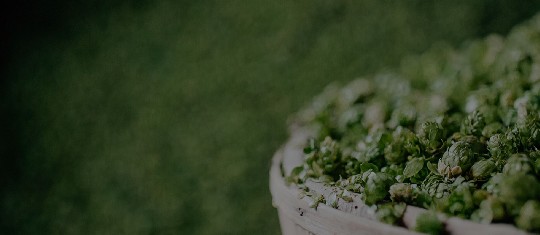Hello and welcome to our HopUpdate harvest special this year. We're in the Central Hallertau in Wolnzach with the Pfab family and today I'm joined by our Sales Manager, Thomas Raiser.
Vanessa: Welcome, Thomas!
Thomas: Hi Vanessa, how are you?
V: I'm fine and you? Nice to have you here in the Hallertau!
T: Thanks! Nice to be here again! It's been a tough year, hasn't it?
V: It was a very tough year due to the weather situation.
T: Can you tell me a little bit about that?
V: Of course! The spring was very cold and the plants couldn't really grow away. But the development stage caught up very quickly because it got warmer. The weather this year was warm, too warm and also too dry. Only in the last ten days we received the rain, which we needed in June and July!
T: That‘s bad luck, but unfortunately we can't help it. A hard year for the growers and unfortunately the rain came too late. The official harvest estimate for the Hallertau from the end of August was 32,500 tons. By now it's clear that we won't reach that either, right?
V: No, we won't.
T: And although the estimate is already 20% lower than last year's harvest, we will probably end up with more like minus 25%, compared to last year.
V: Yes, Thomas, you are right, that will certainly happen for some varieties.
T: Do you already know something about the aroma, Vanessa?
V: Yes, we can already say something about the aroma. The aroma expression seems to be lower than usual. This is also due to the dry weather, which is why the oils could not develop strongly.
T: No surprise, this is typical, when the alphas are lower, so are the oil contents! At this point I would like to mention our Hop Harvest Guide, which will be published in November and will give you a very good sensory assessment of this year's crop and compare it to average harvests. It's a good guide for brewers on how to use the 2022 crop in your recipes.
T: Vanessa, we've already heard a bit about the poor harvest, but what are growers concerned about at this point?
V: On one side we have the disappointing yields, and on the other side we have the increased production costs. These are about 25-30% higher than last year. At the same time, the price of energy and wire has doubled, crop protection products have increased by about 15% compared to last year, while the price of fertilizer has quadrupled. And from October 1, the minimum wage for seasonal workers will increase. So, in total, the additional costs at the grower amount to 1,500-2,000€ per hectare.
T: Very substantial! What answers do we have as an industry to climate change and rising production costs? We have a great breeding program in Germany, which has already bred many new varieties, with more stable yields. And now it's time for the brewing industry to test these varieties and use them more often in beer recipes, so that we can continue to grow hops economically and competitively in Germany.
That was our September HopUpdate, and our last for this year, with lots of interesting information about the 2022 crop.
We hope to see you next year!
Thanks for joining us and see you soon!


